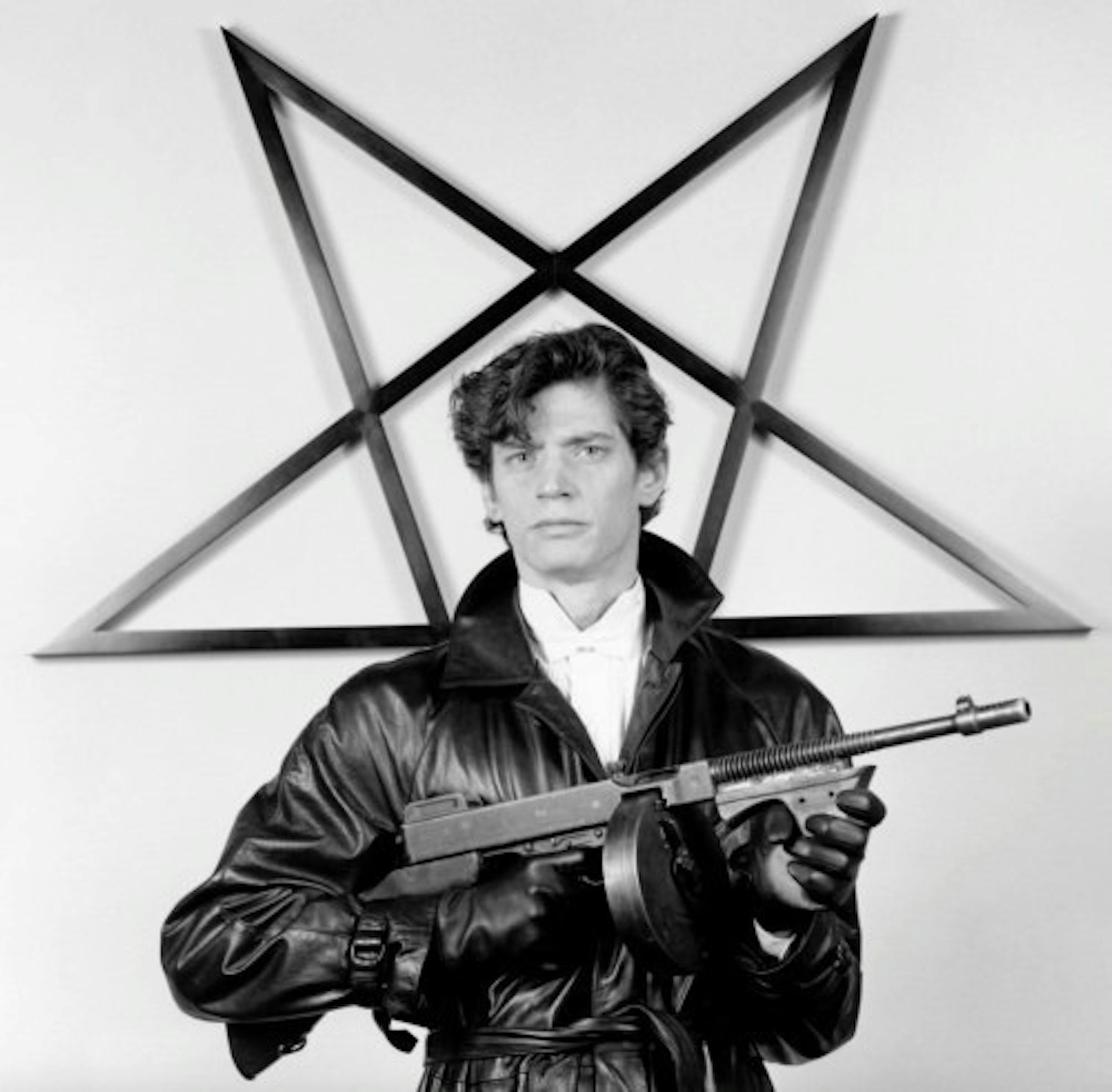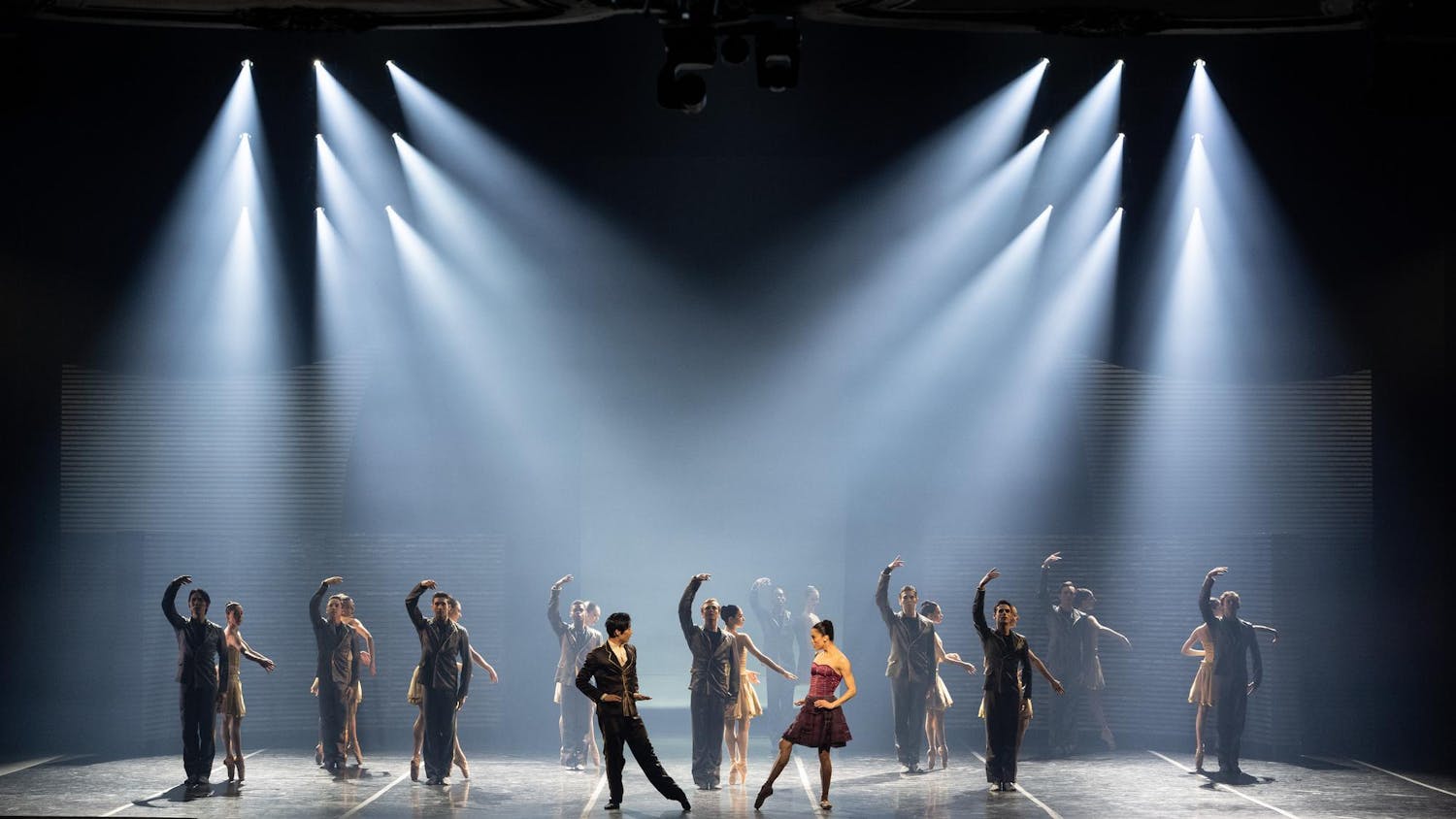“Mapplethorpe” (2018) is the newest biopic starring Matt Smith (of “Doctor Who” fame) as Robert Mapplethorpe, an iconic photographer of the 1970s whose subjects ranged from flowers to friends to an underground BDSM club. The movie follows Mapplethorpe from his early years as a starving artist with Patti Smith (Marianne Rendón), to his growing prominence and famed homoeroticism, and throughout his career until his death from HIV/AIDS at the age of 42.
Smith has played a gay artist in a biopic before, in his depiction of writer Christopher Isherwood in BBC’s TV movie “Christopher and His Kind” (2011). But where that was a tender portrayal of a man and his lovers, this feels more like a collection of fragments. First is the homosexual denial, then the self-discovery and sleeping around, then the significant relationship, then its downfall congruent with the rise of fame, leading to a decedent and selfish lifestyle until eventually he is humbled (here, by disease). "Mapplethorpe" is strangely formulaic for a movie about such a complicated and contradictory man.
The movie has been the subject of sharp criticism for toning down the life of one of the most famously controversial and degenerate modern artists. Mapplethorpe’s relationships with his family, including his assistant photographer brother, are treated more as afterthoughts that get tied up a little too neatly by the end. His drug use and personal psyche are largely hidden from the audience and played more for laughs than genuine character exploration.
The real egregious sin of the movie is the absence of Patti Smith beyond the first half hour. Smith was a lifelong friend and muse of Mapplethorpe’s who is treated here like the first girlfriend who leads to a gay revelation. Rendón is a little too doe-eyed and conventional-looking for Patti, which doesn't help. A scene of the photoshoot for her first album, “Horses” (1975), is surprisingly absent from the photographic montages despite being such a famous testament to the photographer and iconic friendship. Smith and Mapplethorpe's early romantic relationship at the Chelsea Motel feels like a caricature of young bohemians, telling each other that they are the only people in each other's world, in an encounter far too hokey for Smith’s skills with language.
But to its credit, the film doesn’t shy away from some aspects of Mapplethorpe's life. Mapplethorpe’s harsh treatment of his brother is explored rather well — until illness magically brings the brothers together again — as is his consistent snobbery. Another caveat worth mentioning is Mapplethorpe’s treatment of his black subjects, which has been described as fetishization, and his simplification of black masculinity into sexual objectification.This is explored in the film, though briefly; in one powerful scene, Mapplethorpe's black boyfriend, Milton Moore (McKinley Belcher III), confronts him about his attitudes.
Smith is the obvious star of the show as he portrays the artist with furious energy, brooding and hungry when he’s unsuccessful and self-centered when he is. Smith’s Brooklyn accent is a bit stiff — he’s originally from the United Kingdom — but captures his cocky young ambivalence well. The makeup artists and hairstylists also did a commendable job with Smith’s aging, as well as his hard-to-watch transformation as his illness progresses. Belcher’s performance is fantastic as well, bringing a standout energy to his short role.
Overall, hardcore lovers of Mapplethorpe's work and his life as depicted in Patti Smith’s autobiography “Just Kids," which heavily features him, may be disappointed by the tameness of “Mapplethorpe.” Perhaps, had Smith given her consent to contribute to the making of this film, the results would have been more dark and fruitful. But for those who enjoy photography and biopics and have a casual enjoyment or curiosity about Mapplethorpe’s work,“Mapplethorpe” is a satisfying, if understated, choice.
'Mapplethorpe' is an intriguing but tame film on the legendary provocative artist

A self-portrait of Robert Mapplethorpe is pictured.
Summary
"Mapplethorpe" is a thought-provoking, if tame, illustration of the life of photographer Robert Mapplethorpe
2.5 Stars





